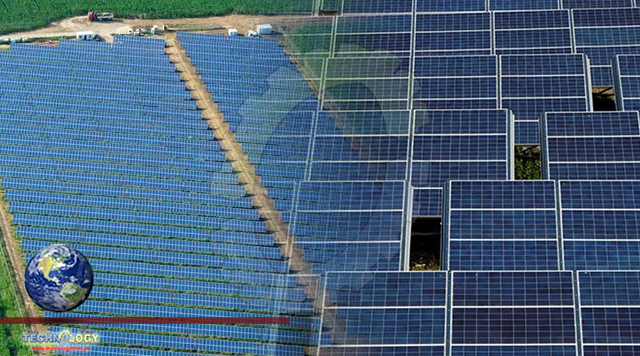The solar cells, also referred to as perovskite solar cells, are a type of thin-film technology that absorbs light using a unique substance.

In addition to having higher efficiency, the new solar cells, according to Chinese researchers, can be mass produced for half the price of conventional silicon cells. The solar cells, also referred to as perovskite solar cells, are a type of thin-film technology that absorbs light using a unique substance.
A mineral with a specific kind of crystalline cell structure is the source of the name for perovskite cells. They are regarded as one of the most promising technologies for effective and affordable solar power due to their high efficiency, low cost, and minimal environmental impact.
For more than ten years, researchers have been working on this technology, and in just a few years, perovskite cells’ power-conversion efficiency (PCE) has increased from 3.8 to over 25%.
The most recent development was made by a team from Nanjing University under the direction of Professor Tan Hairen, who used layered solar cells to increase energy conversion rates.
Tan’s team has done a lot of research on this technology.
Their small-area perovskite stacked cells surpassed conventional silicon cells for the first time last June, according to the internationally recognised Solar Cell Efficiency Tables, with a conversion efficiency of 28%.
The efficiency of their most recent research, which was published last Sunday in the peer-reviewed journal Nature, has increased to 29%.
In order to maximise the use of light, the team has been developing solar cells with an upper layer that absorbs short-wave sunlight and a lower layer that absorbs long waves. The key to enhancing performance is to increase the PCE of the bottom layer and create a high-performance layer to connect these two by means of a layer in the middle.
Tan claimed in the most recent study that he had discovered a way to refine the material for the interconnecting layer so that it could be processed on a large scale at low cost.
In addition, the bottom layer of the perovskite film was given a vacuum conditioning treatment to lessen defects and enhance electron extraction efficiency.
“This paper shows a very meaningful result in this field in that it not only presents a novel strategy but also excellent photovoltaic performance on the best all-perovskite tandem in the world,” a Nature reviewer wrote.”
The perovskite cells, developed by a team in China, have a high lifespan, retaining over 90% of their initial performance after 600 hours of continuous operation under simulated one-sun illumination.
The Ministry of Science and Technology recognized the team’s work as one of the top 10 scientific advancements in China last year due to its potential in clean energy.
The raw materials for perovskite cells are cheap and abundant, making production costs just one 20th of traditional silicon cells. They are also easier to produce and can be made in a single factory, with an overall cost of production only half of that of traditional silicon cells.
Tan and his team are commercializing their technology, Renshine Solar, by designing perovskite cells for roofs, walls, and electric vehicles.
These cells generate electricity under low-light conditions, making them suitable for charging phones and laptops. They have signed an industrial project agreement with the Changshu government and built a production line with a capacity of 150 megawatts by September.